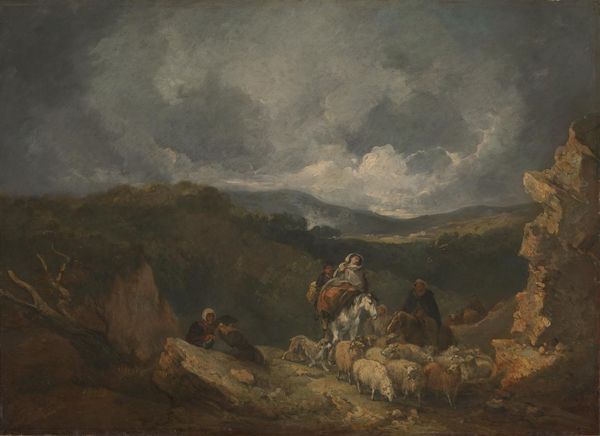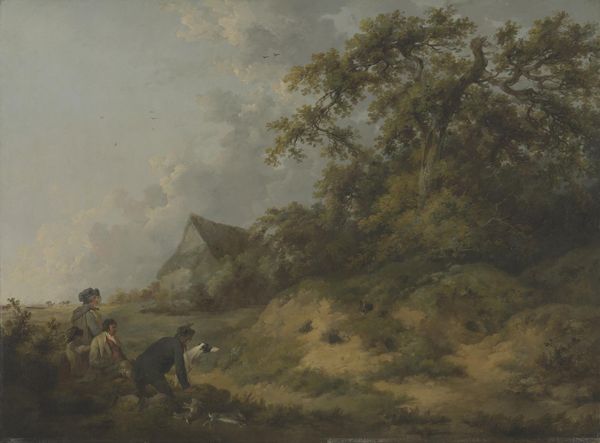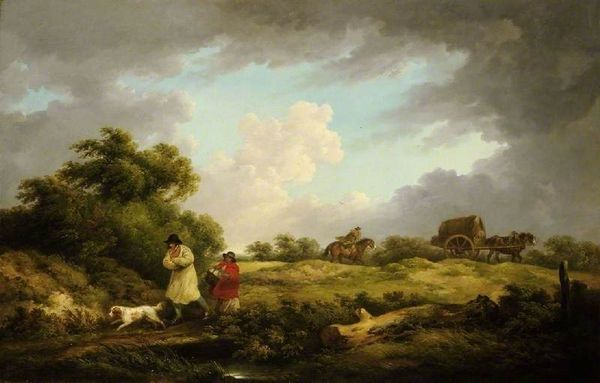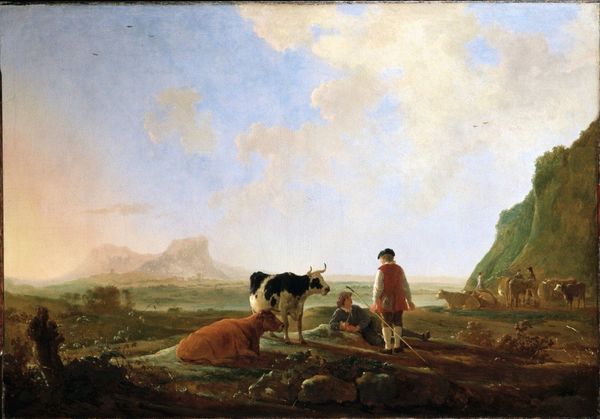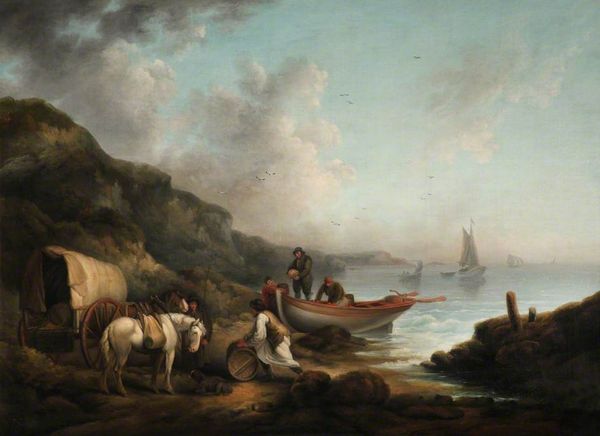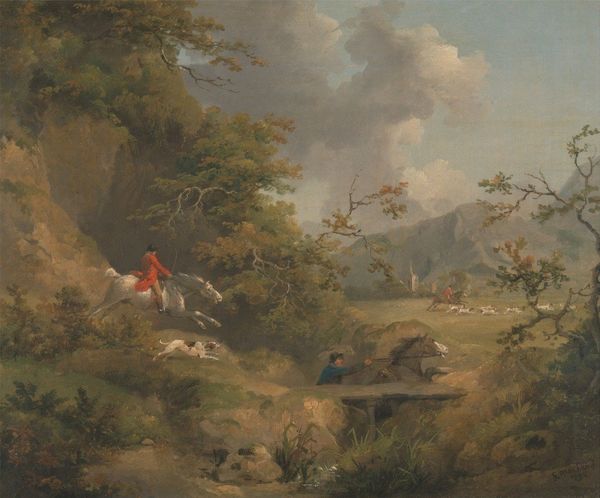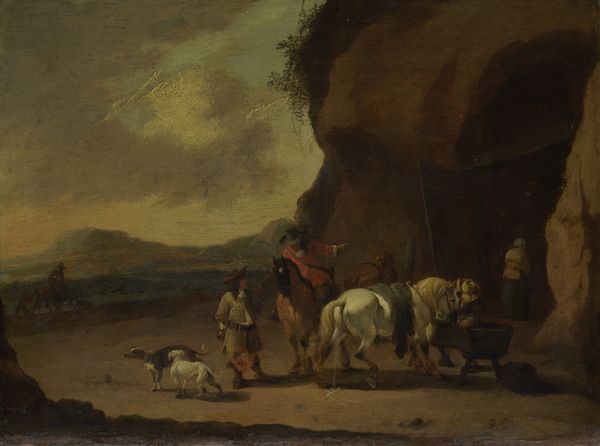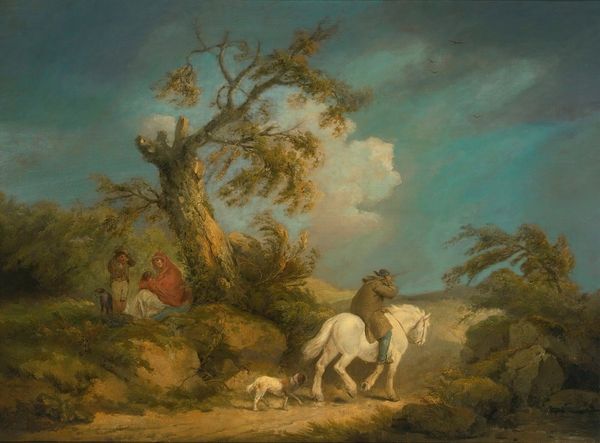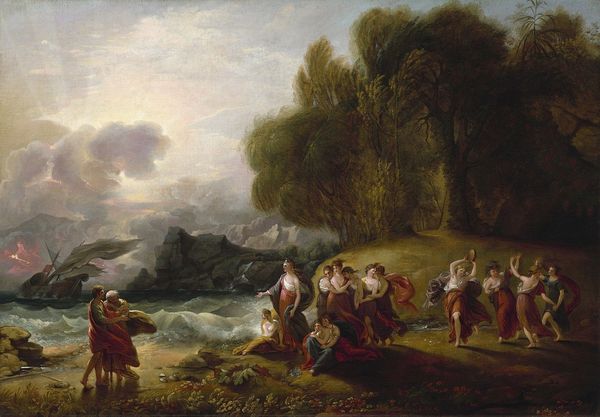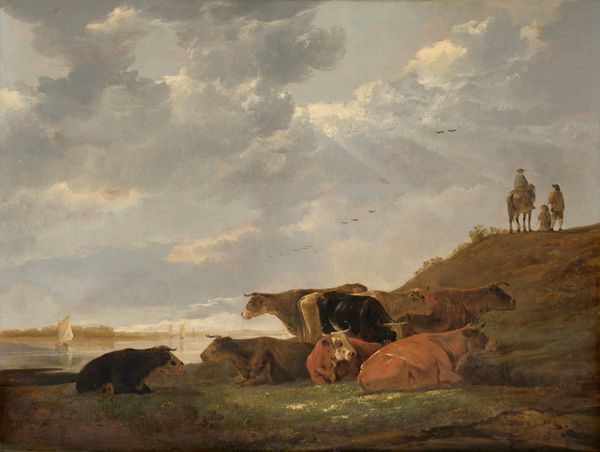
painting, plein-air, oil-paint
#
figurative
#
painting
#
plein-air
#
oil-paint
#
landscape
#
figuration
#
oil painting
#
romanticism
#
genre-painting
Copyright: Public Domain: Artvee
Editor: Here we have George Morland’s "Selling Fish," painted in 1792, rendered in oil. I'm immediately struck by the contrasting elements – a vibrant coastal scene, yet there's also this somber tone. How do you interpret this work, especially given its historical context? Curator: Well, beyond the picturesque depiction of a transaction, I see a powerful commentary on the labor and socio-economic dynamics of 18th-century England. Note the woman; she's literally grounded, haggling over her daily wage, while the figure on horseback embodies a higher social position. It’s important to question, who benefits from her work? Where do those fish end up? Editor: That’s fascinating. I hadn't considered the implied power dynamics so explicitly. Are you suggesting that the landscape itself plays a role in this social narrative? Curator: Absolutely. Consider the plein-air technique. While it appears to be an objective record of nature, it's actually constructing a specific view of rural life. The cliffs looming over the figures, the turbulent sea, all contribute to an atmosphere where nature, and society, feel indifferent to the woman's struggles. Editor: So, it’s not just a pretty picture. Morland is using this scene to talk about the realities of class and labor at the time. It seems a romanticized depiction, but actually is far more subversive? Curator: Exactly! And let's not forget the lack of agency granted to the female figure within art history at that time. She becomes emblematic of broader socio-economic anxieties of the era, revealing Morland's engagement with issues of identity and social structures. Editor: I never would have looked so closely without you directing my analysis in that way. It gives me much to think about regarding not only "Selling Fish" but similar works of the period. Curator: That's the beauty of contextualizing art. It ceases to be just an aesthetic experience, becoming instead a critical tool for understanding ourselves and our history.
Comments
No comments
Be the first to comment and join the conversation on the ultimate creative platform.

